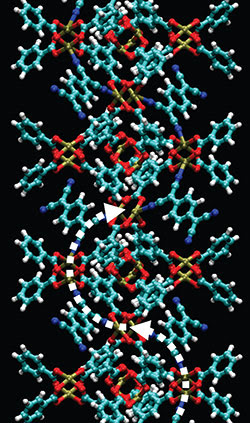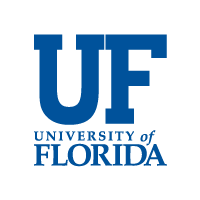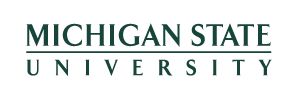NEES News
 |
Advance made towards next-generation rechargable batteries Researchers demonstrate ALD process for NaPON, a thin-film solid-state electrolyte for sodium-ion batteries. More» |
|
 |
Additive Manufacturing and Ni-Ti Metal Bolster Cooling Technology UMD’s Ichiro Takeuchi and team published in Science. More» |
|
 |
Refocusing In-situ Electron Microscopy ChBE Professor Taylor Woehl offers insight into more efficient microscopy technique. More» |
|
 |
What’s Next for Next-Gen Batteries? High-energy-density polymeric cathode for fast-charge sodium and multivalent batteries. More» |
|
 |
ChBE Ph.D. Student Wins Battery500 Young Investigators Award Tao Deng, advised by Prof Chunsheng Wang, will receive $40K in funding to develop his “salt-in –polymer” electrolyte for Li-metal batteries. More» |
|
2019-2020 Academic Year
- Additive Manufacturing and Ni-Ti Metal Bolster Cooling Technology
- Refocusing In-situ Electron Microscopy
- What’s Next for Next-Gen Batteries?
- ChBE Ph.D. Student Wins Battery500 Young Investigators Award
- 'Super Electrolyte' Capable of Operating in Extreme Temperatures, From the Arctic Tundra to the African Savannah
2018-2019 Academic Year
2017-2018 Academic Year
2016-2017 Academic Year
2015-2016 Academic Year
2014-2015 Academic Year
2013-2014 Academic Year
UMERC's Advanced Energy Storage Technology Selected by NASA
August 12, 2014
Energy Research Center faculty, Eric Wachsman, Liangbing Hu, and Chunsheng Wang have been awarded funding from NASA for their Garnet Electrolyte Based Safe, Lithium-Sulfur Energy Storage technology. NASA has selected this research proposal as a potentially breakthrough technology to power future space missions.
This research is an extension of the team’s existing battery project, funded by the U.S. Department of Energy Advanced Research Projects Agency - Energy (ARPA-E), which focused on energy storage using solid-state electrolytes. The solid-state lithium-ion battery with ceramic electrolyte has a greater abuse tolerance than liquid-based batteries, which allows these batteries to be lighter and have a longer life. The solid-state construction also makes these batteries non-flammable and intrinsically safer than typical liquid-based lithium-ion batteries.
The research funded by NASA will utilize a sulfur cathode to increase the battery capacity. This research aims to increase the energy and power density of storage technology, so that NASA space missions can have more power for longer missions, with minimal mass.
NASA is investing in the development of new energy storage devices that will help enable future robotic and human-exploration missions. Spurred on by the National Research Council report, "NASA Space Technology Roadmaps and Priorities”, these technologies will provide NASA with improved energy generation and storage “with reliable power systems that can survive the wide range of environments unique to NASA missions." NASA believes these awards will lead to such energy breakthroughs.
"NASA's advanced space technology development doesn't stop with hardware and instruments for spacecraft," said Michael Gazarik, associate administrator for Space Technology at NASA Headquarters in Washington. "New energy storage technology will be critical to our future exploration of deep space -- whether missions to an asteroid, Mars or beyond. That's why we're investing in this critical mission technology area."
For more information, click here (link is external) to view NASA’s press release.
Optical Sensing Method Highlighted by DOE Frontiers in Energy Research
July 31, 2014
Work done in Reza Ghodssi's group to measure real-time changes in the size of battery electrodes was highlighted by DOE's July 2014 Frontiers in Energy Research Newsletter.
NEES EFRC Awarded Renewal Funding
June 18, 2014
WASHINGTON -- The University of Maryland's NanoStructures for Electrical Energy Storage is one of just 200 proposals to be awarded a grant by U.S. Energy Secretary Ernest Moniz today.
The research supported by this initiative will enable fundamental advances in energy production, storage, and use. In the case of the University of Maryland's NEES, the research will aim to explore the nanoscience and engineering that will help improve battery storage, cycling, and capacity.
"NEES' vision is a new generation of much better batteries - powerful and long-lasting because they are based on carefully designed nanostructures. This requires that we understand: how to precisely control the multiple components (materials and shapes) of the nanostructures; how to densely pack and connect the nanostructures; how they behave – individually and collectively – during charging and discharging, and why; and how to make them safe and long-lasting over thousands of charging cycles," said NEES director and materials science professor Gary Rubloff. "The NEES mission is to provide the scientific insights and design principles needed to achieve this vision."
"Today, we are mobilizing some of our most talented scientists to join forces and pursue the discoveries and breakthroughs that will lay the foundation for our nation's energy future," Secretary Moniz said. "The funding we're announcing today will help fuel scientific and technological innovation."
Ten of the 32 projects receiving funding projects are new while the rest, such as NEES, received renewed funding based both on their achievements to date and the quality of their proposals for future research.
Since their establishment by the Department’s Office of Science, the EFRCs have produced 5,400 peer-reviewed scientific publications and hundreds of inventions at various stages of the patent process. EFRC research has also benefited a number of large and small firms, including start-up companies.
The centers selected for the second round of funding will help lay the scientific groundwork for fundamental advances in solar energy, electrical energy storage, carbon capture and sequestration, materials and chemistry by design, biosciences, and extreme environments.
Additional information about the EFRCs can be found HERE.
News Media Contact: (202) 586-4940

Collins' Group Highlighted in DOE Frontiers in Energy Research
P.G. Collins' group's work on Charge-Transfer Resistance of Carbon Nanotube (CNT) Interfaces has been highlighted in the April 2014 issue of DOE Frontiers in Energy Research.
DOE: Frontiers in Energy Research - April 2014Wang and Cumings Offer Less Lithium in Next Batteries
Dr. Chunsheng Wang and Dr. John Cumings, University of Maryland professors and NEES EFRC researchers, have modified a Li-ion battery anode to accept sodium in place of lithium. Their work has been published in the June 4th issue of Nature Communications.
NEES Highlighted in April 2014 Frontiers in Energy Research
The April 2014 edition of Frontiers in Energy Research, an online summary of research stemming from the national EFRC program, has a story on our NEES EFRC about working to overcome the resistivity challenge of utilizing carbon nanotubes in todays electronics, including solar cells and battery technology.
NEES Accomplishment Meeting 2014 Review
The 2014 NEES Accomplishment Meeting was held in Sandia National Laboratory on May 8th and 9th. It allowed students and researchers from all our institutions to gather and review the work accomplished for the past year.
Eleanor Gillette is awarded All-S.T.A.R. Fellow
Congratulations to Eleanor Gillette in Dr. Sang Bok Lee's group as a recipient of the UMD Graduate School All-S.T.A.R Fellow for AY 2014-15. She was one of only two in the whole CMNS college selected for the honor.
Hyun Jung accepted for Hilton Head MEMS Workshop 2014
Congratulations to Hyun Jung in Dr. Reza Ghodssi's group for their accepted manuscript to the Hilton Head MEMS Workshop 2014: A Solid-State Sensors, Actuators and Microsystems Workshop. The manuscript is titled "In-situ, real-time monitoring of mechanical and chemical structure changes in a V2O5 battery electrode using a MEMS optical sensor", to be included in the Hilton Head 2014 Workshop Technical Digest. Special thanks to Dr. John Sullivan and Dr. Alec Talin for their significant contributions and collaborations.
Bing Hu Named Honored by the American Society for Engineering Education (ASEE)
Thrust E and UMD member Liangbing Hu has been honored by ASEE with the "Campus Star".
Siwy named 2013 APS Fellow
Cutting-edge nanoscience researcher honored
The latest class of Fellows of the American Physical Society includes Zuzanna Siwy, a senior investigator in Nanostructures for Electrical Energy Storage (NEES), an Energy Research Frontier Center funded by the U.S. Department of Energy and headed by University of Maryland Prof. Gary Rubloff.
Siwy, a professor at the University of California, Irvine, was named a fellow “for her innovative use of nanopores in the development of biosensors and nanofluidic ionic circuits." Siwy’s research on nanopores for electronic circuits was a critical contribution to the NEES project, which has just finished its fourth year of operation (efrc.umd.edu).
Election to APS Fellow status requires “exceptional contributions to the physics enterprise; e.g., outstanding physics research, important applications of physics, leadership in or service to physics, or significant contributions to physics education. Fellowship is a distinct honor signifying recognition by one's professional peers,” the society’s website says.
Each nomination is evaluated by the Fellowship committee of the appropriate APS division, topical group or forum and is approved by the APS council. Siwy was one of eight honorees by the society’s Division of Biological Physics in 2013.
Added Molecules Allow Metal-Organic Frameworks to Conduct Electricity
From NIST Tech Beat: December 5, 2013
Scientists from Nanostructures for Electrical Energy Storage, a DOE Energy Frontier Research Center, have added something new to a family of engineered, high-tech materials called metal-organic frameworks (MOFs): the ability to conduct electricity. This breakthrough—conductive MOFs—has the potential to make these already remarkable materials even more useful, particularly for detecting gases and toxic substances.

Electron-sharing TCNQ molecules bind to the copper ions in the framework to enable electrical conductivity in MOF materials. The dotted white arrows illustrate the mechanism of electrical conductivity in these materials. (TCNQ: 7,7,8,8-tetracyanoquinododimethane)
Credit: M. Foster/Sandia National Labs
MOFs are three-dimensional crystalline materials with nanoscale pores made up of metal ions linked by various organic molecules. MOFs have huge surface areas, and scientists can easily control the size of their pores and how the pores interact with molecules by tinkering with their chemistries. These characteristics make them ideal for use as catalysts, membranes or sponges for gas storage or for drug delivery, among other applications.
Thousands of new MOF structures are discovered and characterized each year. While they come in a dizzying array of chemistries and structures, none of them conducts electricity well. The NIST/Sandia team developed a method to modify the electrical conductivity of MOF thin films and to control it over six orders of magnitude. Their findings will appear in the journal Science.*
"MOFs are typically extremely poor electrical conductors because their constituent building blocks, the organic linkers and the metal ions, don't really talk to each other in terms of electrical conduction," says NIST materials engineer Andrea Centrone. "Our work points to a way of controlling and increasing their conductivity."
The group accomplished this by "infiltrating an insulating MOF with redox-active, conjugated guest molecules."
In other words, they infused and bound electron-sharing molecules into MOF thin films to create a material that is stable in air and approximately a million times more conductive than the unaltered MOF.
"Based on several spectroscopic experiments, we believe that the guest molecules serve two important purposes: they create additional bridges between the metal ions—copper, in this case—and they accept electrical charge," says NIST chemist Veronika Szalai.
According to NIST physicist Paul Haney, who provided some modeling for the experimental data, the arrangement of the guest molecules in the MOF creates a unique conductivity mechanism while preserving the benefits of the porous MOF crystalline structure.
These porous and conductive MOFs may be the first in an entirely new class of materials that could be used for sensing, conformal electronics (electronics that can bend and conform to unusual shapes), and other as-yet-unknown applications.
"Our discovery gives chemists and engineers a whole new degree of freedom to tailor these materials for their technological applications," says Centrone. "I would not be surprised if solar cells could be made using this new class of materials."
* A.A. Talin, A. Centrone, A.C. Ford, M.E. Foster,V. Stavila, P. Haney, R.A. Kinney, V. Szalai, F. El Gabaly, H.P. Yoon, F. Léonard and M.D. Allendorf. Tunable electrical conductivity in metal-organic framework thin-film devices. Science Express. Posted online Dec. 5, 2013.
YuHuang Wang's Group Create Durable Silicon Nano "Beads on a String" Anode
Pulsing with lithium, tiny silicon beads on a nanotube hold promise for better batteries.
Maryland NanoCenter News Story
Links
Congratulations to Janice Reutt-Robey on becoming the Dept Chair for Chemistry & Biochemistry
Links
Dr. Reutt-Robey's Faculty ProfileCongratulations to Khim Karki for being chosen to participate in the first JUAMI workshop
University of Maryland grad student Khim Karki of Dr. Cuming's group (Thrust B) is one of 15 PhD and post-doctoral researchers from the US to be awarded a Joint US-Africa Materials Initiative fellowship. This fellowship will be held in Addis Ababa, Ethiopia from Dec. 9-21, 2012 and will challenge participates in solving current issues facing African nations with organic and inorganic photovoltaics, photocatalysis, batteries, supercapacitors, fuel cells and other forms of alternative energy.
Links
Program outline
About the fellowship
Khim Karki's UMD webpage
Reginald Penner Joins ACS Nano as an Associate Editor
University of California, Irvine's Reginald Penner has joined ACS Nano as an Associate Editor starting Oct. 1. ACS Nano is a leading, high impact monthly publication with a focus on nanoscience and nanotechnology. Dr. Penner's appointment highlights his efforts and knowledge in this area of science.
Links
Wenbo Yang's work is featured on the cover of Chemistry of Materials
Wenbo Yang's work, from Dr. Reginald Penner's group at University of California - Irvine, has been featured on the cover of the July 24th, 2012 issue of Chemistry of Materials. The work showcases their advances with core-shell gold-MnO2 nanowires.
Links
Zuzanna Siwy awarded Faculty Award from the University of California-Irvine
Congratulations to UCI's Zuzanna Siwy has been awarded a prestigious "Distinguised Mid-Career Faculty Award for Research" from the University of California-Irvine. Her work examines fluid behavior over charged surfaces and in nanoscale geometries.
Links
Zuzanna Siwy's UCI Faculty Profile Page
Nature Nanotechnology: Nanopores: Water flow at the flip of a switch
Nature Nanotechnology: Electric-field-induced wetting and dewetting in single hydrophobic nanopores
Congatulations to UMD's John Cumings on his promotion to Associate Professor
Professor John Cumings's accomplishments in teaching and research are exemplary and the promotion is an acknowledgement of the excellent work he has done over the past 7 years.
Yale engineers develop novel system for producing conductive films
Yale engineers, including André Taylor and his group, have developed a novel automated system for generating strong, flexible, transparent coatings with promising uses in lithium-ion battery and fuel cell production, among other applications.
Links
Yale News ArticleInterNano Article
Link to paper
Marty Green, NEES External Advisory Board, guest editor for MRS Bulletin
NEES External Advisory Board member, Marty Green, was one of the lead guest editors for the MRS Bulletin special issue "Materials for Sustainable Development" in April.
Links
MRS April BulletinNew Record for Smallest Battery
John Cumings (UMD), Jian Yu Huang (SNL), and Khim Karki (UMD) worked with researchers at NIST and UMD and found a practical minimum thickness for LiPON electrolyte in a nanostructure battery.
Links
Science Daily ArticleSoftpedia Article
Link to paper
Eric Epstein wins an NSF Graduate Research Fellowship
Eric Epstein, an undergraduate student in Dr. John Cuming's group, has been awarded a NSF Graduate Research Fellowship. Fellows receive 3 years of support funding, $30,000 annual stipend, and $12,000 cost-of-education allowance to the institution.
Links
EFRC Research Highlighted in ACS Nano
In it's February 2012 publication, ACS Nano highlighted research performed by Jian Yu Huang (SNL) and others entitled "Size-Dependent Fracture of Silicon Nanoparticles During Lithiation." From this research, it was discovered that silicon nanoparticles have a critical diameter of ~150nm where larger particles can suffer from surface cracking and fracture, while smaller diameters do not suffer from this affect. This finding could have direct applications in creating more robust lithium ion batteries.
Links
ACS Nano PublicationControlling chemistry improves potential of carbon nanotubes
YuHuang Wang's research team along with Northwestern University and the Maryland NanoCenter have developed a breakthrough method to create soluble carbon nanotubes (CNTs) - a long sought after property that has hindered the permeation of CNTs use in technology.
Links
NanoCenter ArticleWang's UMD Chemistry & Biochemistry Faculty Profile
YH Wang Reasearch Page
R Penner named UCI Chancellor's Professor
Congratulations to University of California, Irvine professor Dr. Reginald Penner on being named Chancellor's Professor. This title is reserved for "faculty members who have demonstrated unusual academic merit and whose continued promise for scholarly achievement is unusually high." Chancellor's Professors make up less than 3 percent of UCI's faculty. Dr. Penner's outstanding effort.
Links
Penner Group PagePenner's UCI Chemistry Profile
UCI Chancellor's Professors
Virus Helps Build Batteries
Utilizing the Tobacco Mosaic Virus, our EFRC researchers have developed a novel method for producing high surface area electrodes. This method involves the self-replicating and self-assembling properties of the virus to build a template for growing and coating nanorods. Additionally, this technique is scalable and cost-efficient lending itself to become a viable production method.
Links
UMD Engineering News StoryJY Huang and JP Sullivan observe nanowire charging in real time
In the December 10th issue of Science, NEES Thrust D members JY Huang and JP Sullivan of the Center for Integrated Nanotechnologies at Sandia National Lab report the real time observation of a SnO2 nanowire charging with lithium inside a TEM.
Links
NEES HighlightDecember 10th issue of Science
Chemistry World Dec 2010 News
AZ Nano News
Science Daily Release
Banerjee's Self-Powered Solar Circuits Featured in Sierra Magazine
NEES EFRC graduate student Parag Banerjee, under the advisement of Thrust D PI Professor Gary Rubloff (UMD), has been featured in Sierra Magazine for his work on solar circuits.
Links
UMERC ArticleParag Banerjee UMD Website
Gerasopoulos Wins Best Poster Award at Micro/Nano Alliance Symposium
NEES EFRC graduate student Konstantinos Gerasopoulos, under the advisement of Thrust D PI Professor Reza Ghodssi (UMD), has won the Best Poster award at this year's Micro/Nano Alliance Symposium at Johns Hopkins University Applied Physics Laboratory.
His work involves utilizing the tobacco mosaic virus as scaffolding for building anodes out of nickel and titanium dioxide.
Links
UMD Materials Science and Engineering Article"Nanostructured nickel electrodes using the Tobacco mosaic virus for microbattery applications,"J. Micromech. Microeng. 18 (2008) 104003
ACS Nano, Discovery News, Nanowerk Feature Work by EFRC Group
EFRC researchers have modified the tobacco mosaic virus (TMV) to aid in building silicon anodes. The modified virus can be patterned onto a metal surface, eliminating the need for binders/additives and increasing density. Layering nickel and silicon around the virus in an electro-less plating bath creates a 3D current collector. Capacitance of the new anode has shown a 10x increase while the structure maintains cycling stability and charge rates.
Links
ACS Nano publicationDiscovery News
Nanowerk
Junior and senior faculty positions in energy announced at University of Maryland Energy Research Center (UMERC)
UMERC, a rapidly growing cross-campus energy research center, has announced two new faculty positions, one at senior and one at junior level. Depending on the candidate, the appointment may be made in any of several engineering departments, or may be a joint appointment. See the announcement for details.
Martin to receive the 2010 ACS Award in Electrochemistry
NEES investigator Charles Martin from the University of Florida will receive the 2010 Award in Electrochemistry from American Chemical Society Division of Analytical Chemistry. The award recognizes an individual who through scholarly activity has definitely and uniquely advanced the field of electrochemistry.
Congratulations, Chuck!
Martin's University of Florida website
Sherrill will attend summer meeting with Nobel Laureates
The Lindau Council has accepted NEES graduate research assistant Stefanie Sherrill to participate in the 60th Interdisciplinary Meeting of Nobel Laureates from June 27 to July 2, 2010 in Lindau, Germany. This year marks the 60th annual gathering of Nobel Laureates and selected graduate students in Lindau.
The meeting serves to encourage the transfer knowledge between generations of scientists. Nobel Laureates give lectures, panel discussions and seminars that inspire the new researchers. 68 Laureates are expected to participate.
Academic partners from around the world nominate 1500 individuals from a selected pool of 20,000 students. The Council accepts 500 of the graduate students nominees to attend the event.
Congratulations, Stefanie!












